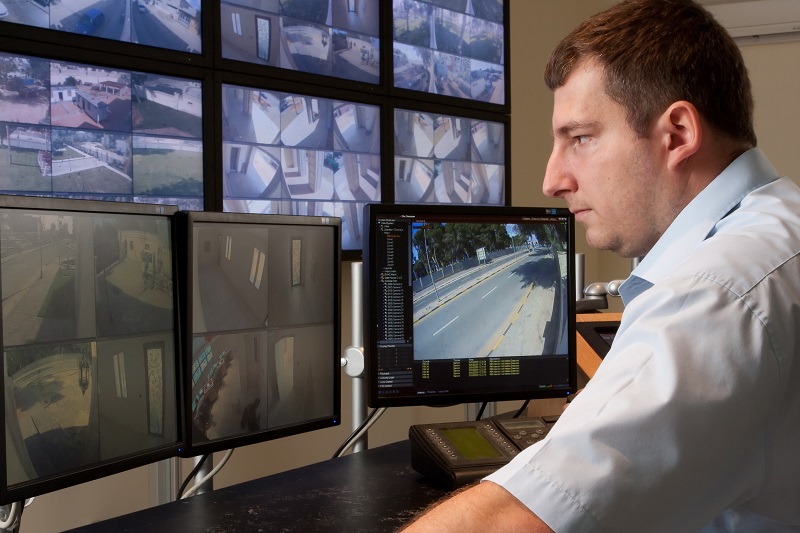Secure Your Home With Trusted Fiber Optic Protection Solutions
In a period where protection risks are progressively advanced, the requirement for efficient protection options is vital. Fiber optic safety systems stand out by using phenomenal integrity and efficiency, leveraging innovative light transmission technology to enhance security capacities. security fibers. Comprehending the ins and outs of fiber optic safety and security can brighten the course to protecting your home much more effectively.
Benefits of Fiber Optic Security
Fiber optic protection options provide a variety of benefits that make them progressively necessary in today's digital landscape. One of one of the most considerable benefits is their exceptional bandwidth capacity, which permits for the transmission of big amounts of information over cross countries without significant signal destruction. This ability is especially advantageous for safety and security systems that count on high-def video security and real-time monitoring.
In addition, fiber optic cable televisions are naturally a lot more secure than standard copper wiring. They are unsusceptible to electro-magnetic interference, making them much less vulnerable to hacking or eavesdropping. This boosted safety and security is crucial for safeguarding sensitive information and maintaining the stability of security systems.
Additionally, fiber optics are more long lasting and immune to environmental aspects, such as moisture and temperature level variations, ensuring long-lasting integrity and reduced maintenance prices. The light-weight nature of fiber optic cords also simplifies setup procedures, enabling greater adaptability in system layout.
How Fiber Optic Solution Job
In modern-day safety applications, the procedure of fiber optic systems counts on the principles of light transmission with flexible glass or plastic fibers. These fibers are designed to lug light signals over fars away with marginal loss, making them excellent for sending information associated with safety and security monitoring. The core of the fiber, surrounded by a cladding product, makes sure that light signals stay included within the core via a sensation recognized as overall internal representation.
When incorporated into safety systems, fiber optic cable televisions can transmit information from different sensors, such as electronic cameras, motion detectors, and alarms, to a main tracking terminal. The high data transfer capacity of fiber optics permits the transmission of big quantities of data at the same time, making it possible for real-time monitoring and timely reaction to potential hazards.

Sorts Of Fiber Optic Safety And Security Solutions
Various kinds of fiber optic safety services have actually emerged to boost monitoring and security across various environments. One famous service is fiber optic boundary breach discovery systems (PIDS), developed to check and protect property limits via the detection of resonances and disruptions along fiber optic cable televisions. These systems give real-time notifies, making it possible for prompt actions to unapproved access attempts.
One you could try this out more reliable service is fiber optic video security. This technology leverages high-definition electronic cameras connected through fiber optic cords to send video data over cross countries without substantial loss of quality. This configuration is especially valuable in expansive areas, such as flight terminals and commercial websites, where typical copper cables may falter.
Furthermore, fiber optic sensing units are progressively made use click resources of for ecological surveillance, spotting modifications in temperature level, pressure, or acoustic signals that could indicate safety and security breaches or unsafe problems. These sensors offer high sensitivity and precision, making them suitable for important facilities protection.

Installment and Upkeep Tips
Efficient installation and upkeep of fiber optic safety services are essential for guaranteeing their ideal efficiency and long life. Fiber optic wires ought to be routed firmly, preventing sharp bends or spins that might compromise hop over to these guys their integrity.
Throughout setup, it is advisable to perform extensive screening of the system to verify that all elements are working correctly. Routine maintenance checks must be scheduled to evaluate the fiber optic cords for any kind of signs of wear or damages, as well as to make sure that connections stay secure. Cleaning the connectors occasionally is also crucial to stop signal loss because of dirt or debris.
Additionally, keeping an upgraded supply of installed elements and their specifications can help with less complicated troubleshooting and upgrades. By adhering to these setup and upkeep tips, residential property proprietors can make the most of the performance of their fiber optic safety and security services, ensuring a trustworthy protection versus potential dangers.
Contrasting Prices and Performance
When evaluating fiber optic safety and security options, recognizing the equilibrium in between costs and efficiency becomes critical (security fibers). Organizations needs to take into consideration the ahead of time financial investment, recurring maintenance costs, and the long-term worth these systems provide. While fiber optic systems may require a higher initial installation cost contrasted to conventional copper electrical wiring, their toughness and minimized sensitivity to electro-magnetic disturbance commonly convert to lower maintenance costs over time
Effectiveness is an additional critical factor; fiber optic safety systems offer enhanced information transmission rates and enhanced dependability. They can cover larger ranges without signal destruction, making them ideal for large residential or commercial properties or remote locations. Furthermore, the high data transfer capability supports innovative protection applications, such as high-def video surveillance and real-time surveillance, which are necessary for extensive safety and security monitoring.
Ultimately, the selection between price and efficiency should be guided by details safety and security demands and run the risk of assessments. Organizations needs to analyze their special demands, considering aspects like residential or commercial property dimension, safety and security dangers, and technological developments. By carrying out a thorough cost-benefit analysis, stakeholders can make enlightened decisions that line up with their protection objectives while making sure a sound financial investment in fiber optic innovation.
Verdict
In conclusion, fiber optic security solutions offer significant benefits in terms of performance, reliability, and resistance to ecological disturbances. Eventually, the adoption of fiber optic modern technology represents a forward-thinking technique to securing residential properties against evolving security hazards.